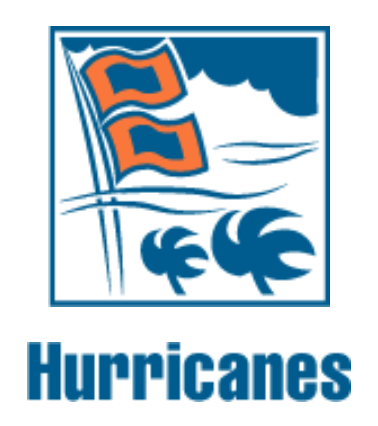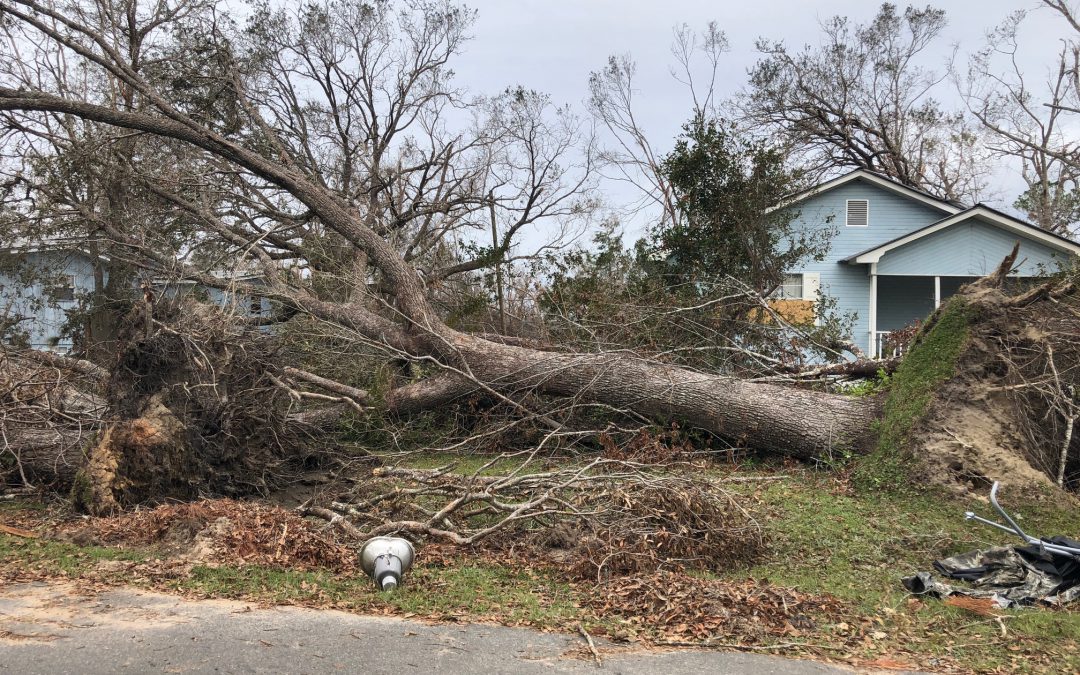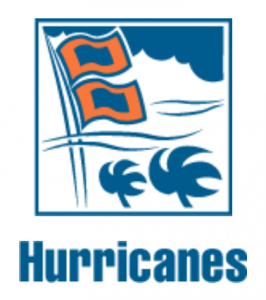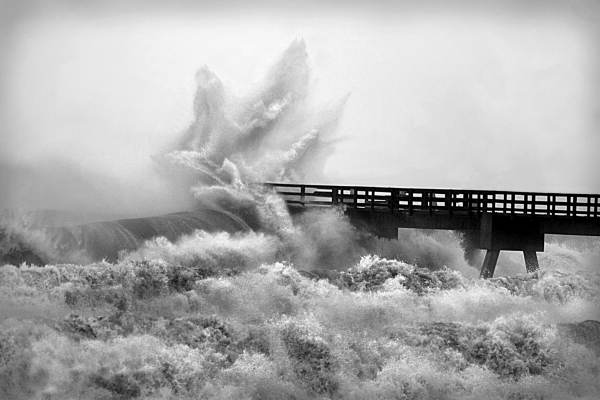
by Carrie Stevenson | Jun 4, 2020

The lineup of 2020 tropical storm names. Tropical storm “Cristobal” is currently headed towards the northern Gulf of Mexico. Photo credit: The Weather Channel
This past March, many people spoke about sensing a sort of free-floating anxiety, waiting for potential disaster to land at their doorstep. The unknowns we faced as COVID-19 cases increased in the United States were not quite like anything we’d previously experienced, although it felt comparable to knowing a hurricane was about to make landfall. After this virus, perhaps, a hurricane seems like a relief—at least we know what to expect and approximately where the most damage will occur. However, big tropical storms carry with them their own set of unpredictable factors like direction and strength at landfall. But the storm-hardiness of our homes, our tree choices, smart evacuation plans—these we can control. Well-thought out precautions can make the difference between getting right back on your feet after a storm and losing almost everything.

Aluminum shutters are one of the many preventative measures Florida homeowners can include in their hurricane preparedness.
Photo: Carrie Stevenson, UF IFAS Extension
No matter how well you have planned for a hurricane, unexpected issues always come up. However, being ready can cut down on the fear and worry.
A few of those preparedness factors include:
* An evacuation plan
* A hurricane kit
* Home wind mitigation techniques
* Tree evaluation
* Wind/flood insurance
I will discuss each of these topics in depth over the next few weeks. Particularly if you are new to the area or never experienced a hurricane, be sure to review good readiness websites, check out these apps, and see which tips might be the most useful to you and your family as we enter the already-active 2020 hurricane season.

by Carrie Stevenson | May 17, 2019

Aluminum shutters are one of the many preventative measures panhandle homeowners can include in their hurricane preparedness.
Photo: Carrie Stevenson
Hurricane Season in the Gulf and Atlantic begins June 1. For those of us who have lived in hurricane territory for some time, we all have our war stories of days without electricity and water, of being stuck in evacuation traffic, and of neighborhood camaraderie in the aftermath. Whether a newcomer or a native, it is always important to plan ahead and not be complacent about storm readiness. The last few summers have borne out the climate predictions of stronger storms, with many of our neighbors still struggling to dig out of the immense damage done by Category 5 Hurricane Michael last fall.
In this article, I will be paraphrasing a section from the well-done Homeowners Handbook to Prepare for Natural Hazards. A new version of this guide will be coming out soon, but I highly recommend the handbook (hard copies available at many Extension offices) for anyone living in Florida.
Tip #1: Gather your emergency supplies. Do this sooner than later—when a storm is in the Gulf with a trajectory towards your city is not the time to go shopping. Lines will be long, people will be stressed, and shelves will start to empty. Gather emergency supplies like water, canned goods, batteries, and flashlights (full list here) now, and restock monthly throughout the summer and fall.
Tip #2: Create a separate evacuation plan for natural events, such as hurricanes/tropical storms, tornadoes, floods, and wildfires. Northwest Florida is prone to all of these natural phenomena, and the plan required for each is different. For a tornado or tropical storm you will most likely shelter in place (unless your home is not secure in this situation), while fires, flooding, and strong hurricanes may require securing your home and leaving town.
Tip #3: Know you property and take appropriate action. Look at your location—if the land floods during a rain, consider flood insurance. If trees overhang your house, consider trimming or cutting branches that might damage your house in a storm. If the property has a high structural profile, it could be especially susceptible to wind damage in a hurricane.
Tip #4: Know your house and take appropriate action. When was your house built? Does it have connectors to tie the roof to the wall or the wall to the foundation? When will you need to reroof? Look at your blueprints—if you don’t have a copy, your homebuilder or local building department may have copies.
Tip #5: Strengthen your house. A house built after the early to mid-1990’s should have hurricane clips tying the roof to the wall and strong connectors from the wall to the foundation. If your house was built before then, you can still retrofit at a reasonable cost. Wind-rated garage doors, precut shutters, and replacing windows with impact-resistant glass can all protect your home. In the western Panhandle, 75% of retrofit costs can be covered through the Rebuild Northwest Florida wind mitigation program.
Tip #6: Utilize the State of Florida’s Hazard Mitigation Grant Program. This program can be used for a number of home improvements, including construction of a safe room for tornado shelter.
Tip #7: Insurance. Don’t gamble with your house. Obtain adequate wind, flood, and home insurance. Remember—if there is a hurricane in the Gulf, insurance companies will not issue windstorm policies.
Tip #8: Take advantage of potential discounts for your hurricane insurance premiums. Coverage may vary among insurance companies, so call you insurance agent to find out about discounts that may be available. Significant discounts may be provided for reducing the risk to your house with window protection, roof-to-wall tie downs, and wall-to-foundation tie downs.
Tip #9: Finance creatively. Consider efforts to strengthen your house as an important home improvement project. Most projects are not that expensive. For the most costly ones, a small home improvement loan and potential discounts from hurricane insurance premiums may make these projects within reach. It is a great investment to strengthen your house and provide more protection to your family.
Tip #10: Seek the assistance of a qualified, license architect, structural engineer, or contractor. There are some improvements that can be done yourself, but if you cannot do the work, seek qualified assistance through trusted references from friends and family and professional associations.
For more information, reach out to your county Emergency Management department or visit these IFAS Extension Hurricane Preparedness and Recovery resources.

by Ray Bodrey | May 23, 2018
Storm Season is Right Around the Corner, Let’s Be Ready
Ray Bodrey, UF/IFAS Gulf County Extension Director
Hurricane season technically begins on June 1st and ends November 30th. However, storm season may reach us in the Panhandle as early as Memorial Day weekend. As Floridians, we face the possibility of tropical storms and hurricanes every year. This simply goes with the territory. During these months, it’s important to have a safety plan in place.
Be sure to keep a basic emergency kit in your home, even for storms that may not require you to evacuate. This kit should have at least the following supplies:
- battery powered NOAA weather radio
- extra batteries
- flashlight
- whistle
- manual can opener
- food and water
- moist towelettes
- first aid kit. The kit should have enough supplies for at least three days.
If the approaching storm is a major threat, you may be asked to leave your home. State & County emergency management officials would not ask you to do so without a valid reason. Please do not second guess this request. Leave your home immediately. Requests of this magnitude will normally come through radio broadcasts and area TV stations.

UF/IFAS photo: Marisol Amador
The most important thing to keep in mind if a major storm is approaching is to have your own plan for a possible evacuation. The University of Florida has developed, “The Disaster Handbook” to help citizens plan for safety. The handbook includes a chapter dedicated to hurricane planning. The chapter can be downloaded in pdf at http://disaster.ifas.ufl.edu/chap7fr.htm.
Utilizing the 15 principles below will assist you in your evacuation planning efforts:
-Know the route & directions: keep a paper state map in your vehicle. Be prepared to use the routes designated by the emergency management officials.
-Local authorities will guide the public: Stay in communication with local your local emergency management officials. By following their instructions, you are far safer.
-Keep a full gas tank in your vehicle: During a hurricane threat, gas can become sparse. Be sure you fill your tank in advance of the storm.
-One vehicle per household: If evacuation is necessary, take one vehicle. Families that carpool will reduce congestion on evacuation routes.
-Powerlines: Do not go near powerlines, especially if broken or down.
-Clothing: Wear clothing that protects as much area as possible, but suitable for walking in the elements.
-Emergency Kit:This kit should have at least the following supplies: battery powered NOAA weather radio, extra batteries, flashlight, whistle, manual can opener, food, water moist towelettes and first aid kit. The kit should have enough supplies for at least three days.
-Phone: Bring your cell phone & charger.
-Prepare your home before leaving: Lock all windows & doors. Turn off water. You may want to turn off your electricity. If you have a home freezer, you may wish not too. Leave your natural gas on, unless instructed to turn it off. You may need gas for heating or cooking and only a professional can turn it on once it has been turned off.
-Family Communications: Contact family and friends before leaving town, if possible. Have an out of town contact as well, to check in with regarding the storm and safety options.
-Emergency shelters: Know where the emergency shelters are located in your vicinity.
-Shelter in place: This measure is in place for the event that emergency management officials request that you remain in your home or office. Close and lock all window and exterior doors. Turn off all fans and the HVAC system. Close the fireplace damper. Open your disaster kit and make sure the NOAA weather radio is on. Go to an interior room without windows that is ground level. Keep listening to your radio or TV for updates.
-Predetermined meeting place: Have a spot designated for a family meeting before the imminent evacuation. This will help minimize anxiety and confusion and will save time.
-Children at school: Have a plan for picking up children from school and how they will be taken care of and by whom.
-Animals and pets: Have a plan for caring for animals and shelter options in the event of an evacuation. For livestock evacuation, contact your local county extension office
Following these steps will help you stay safe and give you a piece of mind during the storm season. Contact your local county extension office for more information.
Supporting information for this article can be found in the UF/IFAS EDIS publication, “Hurricane Preparation: Evacuating Your Home”, by Elizabeth Bolton & Muthusami Kumaran: http://edis.ifas.ufl.edu/pdffiles/FY/FY74700.pdf
For emergency management planning information for individuals and families, please visit the following University of Florida website: https://emergency.ufl.edu/preparedness/emergency-preparedness/ & https://www.ready.gov/build-a-kit
UF/IFAS is An Equal Opportunity Institution.
by Ray Bodrey | May 21, 2017
Hurricane season begins this year on June 1st and ends November 30th. As Floridians, we face the possibility of hurricanes each year. This simply goes with the territory. During these months, it’s important to plan for the threat of a hurricane, and at the same time hope, it never happens.
First and foremost, you may be asked to leave your home in emergency conditions. Emergency management officials would not ask you to do so without a valid reason. Please do not second guess this request. Leave your home immediately. Requests of this magnitude will normally come through radio broadcasts and area TV stations.

Figure 1. UF/IFAS Disaster Handbook.
Credit. UF/IFAS Communications.
The most important thing to keep in mind is to have your own, up to date plan for a possible evacuation. The University of Florida has developed, “The Disaster Handbook” to help citizens plan for safety. The handbook includes a chapter dedicated to hurricane planning. The chapter can be downloaded in pdf at http://disaster.ifas.ufl.edu/chap7fr.htm.
Utilizing the 15 principles below will assist you in your evacuation planning efforts:
- Know the route & directions: keep a paper state map in your vehicle. Be prepared to use the routes designated by the emergency management officials.
- Local authorities will guide the public: Stay in communication with local your local emergency management officials. By following their instructions, you are far safer.
- Keep a full gas tank in your vehicle: During a hurricane threat, gas can become sparse. Be sure you fill your tank in advance of the storm.
- One vehicle per household: If evacuation is necessary, take one vehicle. Families that carpool will reduce congestion on evacuation routes.
- Powerlines: Do not go near powerlines, especially if broken or down.
- Clothing: Wear clothing that protects as much area as possible, but suitable for walking in the elements.
- Disaster Kit: Create a kit complete with a battery powered NOAA weather radio, extra batteries, food, water, clothing and first aid kit. The kit should have enough supplies for at least three days.
- Phone: Bring your cell phone & charger.
- Prepare your home before leaving: Lock all windows & doors. Turn off water. You may want to turn off your electricity. If you have a home freezer, you may wish not too. Leave your natural gas on, unless instructed to turn it off. You may need gas for heating or cooking and only a professional can turn it on once it has been turned off.
- Family Communications: Contact family and friends before leaving town, if possible. Have an out of town contact as well, to check in with regarding the storm and safety options.
- Emergency shelters: Know where the emergency shelters are located in your vicinity.
- Shelter in place: This measure is in place for the event that emergency management officials request that you remain in your home or office. Close and lock all window and exterior doors. Turn off all fans and the HVAC system. Close the fireplace damper. Open your disaster kit and make sure the NOAA weather radio is on. Go to an interior room without windows that is ground level. Keep listening to your radio or TV for updates.
- Predetermined meeting place: Have a spot designated for a family meeting before the imminent evacuation. This will help minimize anxiety and confusion and will save time.
- Children at school: Have a plan for picking up children from school and how they will be taken care of and by whom.
- Animals and pets: Have a plan for caring for animals and shelter options in the event of an evacuation. For livestock, contact your local county extension office.
Following these steps will help you stay safe and give you a piece of mind, during hurricane season. Contact your local county extension office for more information.
Supporting information for this article can be found in the UF/IFAS EDIS publication, “Hurricane Preparation: Evacuating Your Home”, by Elizabeth Bolton & Muthusami Kumaran: http://edis.ifas.ufl.edu/pdffiles/FY/FY74700.pdf
UF/IFAS Extension is An Equal Opportunity Institution.

by Carrie Stevenson | May 8, 2016
The beginning of hurricane season—June 1—is very nearly upon us. It’s been more than ten years since northwest Florida was on the receiving end of a destructive hurricane. However, we’ve been no strangers to devastating floods, tornadoes, and even an ice storm over the past few years. No matter what natural disaster lurks around the next corner, there are steps every single resident can take to reduce the impact storms have on your family and property.

Aluminum shutters are one of the many preventative measures panhandle homeowners can include in their hurricane preparedness.
Photo: Carrie Stevenson
The week of May 15-21 has been designated “Hurricane Preparedness Week,” and there will be lots of information in the media about the 2016 Atlantic hurricane season, including preparation checklists and mock hurricane drills. As part of the effort led by National Oceanic and Atmospheric Association (NOAA), we will be sending out daily reminders and tips over Extension social media outlets during Hurricane Preparedness Week to remind readers of practical tips for preparing.
The main thrust of the message is fivefold: Know your evacuation zone http://flash.org/hurricane-season/ ; have an insurance checkup http://www.flash.org/homeownersinsuranceguide/ ; build a disaster supply kit http://www.redcross.org/get-help/prepare-for-emergencies/be-red-cross-ready/get-a-kit ; strengthen your home http://www.rebuildnwf.org/ ; and help your neighbor http://www.fema.gov/community-emergency-response-teams .
In Escambia and Santa Rosa counties, residents can contact Rebuild Northwest Florida http://www.rebuildnwf.org/ to learn how to mitigate windstorm damage at a quarter of the actual cost. Community Emergency Response Team (CERT) training is available in many communities, which builds teams of neighborhood leaders to help with immediate response before professional emergency personnel can arrive.
It is easy to be complacent when we haven’t had a big hurricane in a while. However, it’s important—especially for newcomers to the area—to be educated about your options and make a plan in case it’s ever needed.
If you’re interested in learning more, check out NOAA’s information at http://www.nws.noaa.gov/com/weatherreadynation/hurricane_preparedness.html or the Federal Alliance for Safe Homes (FLASH) website http://hurricanestrong.org








